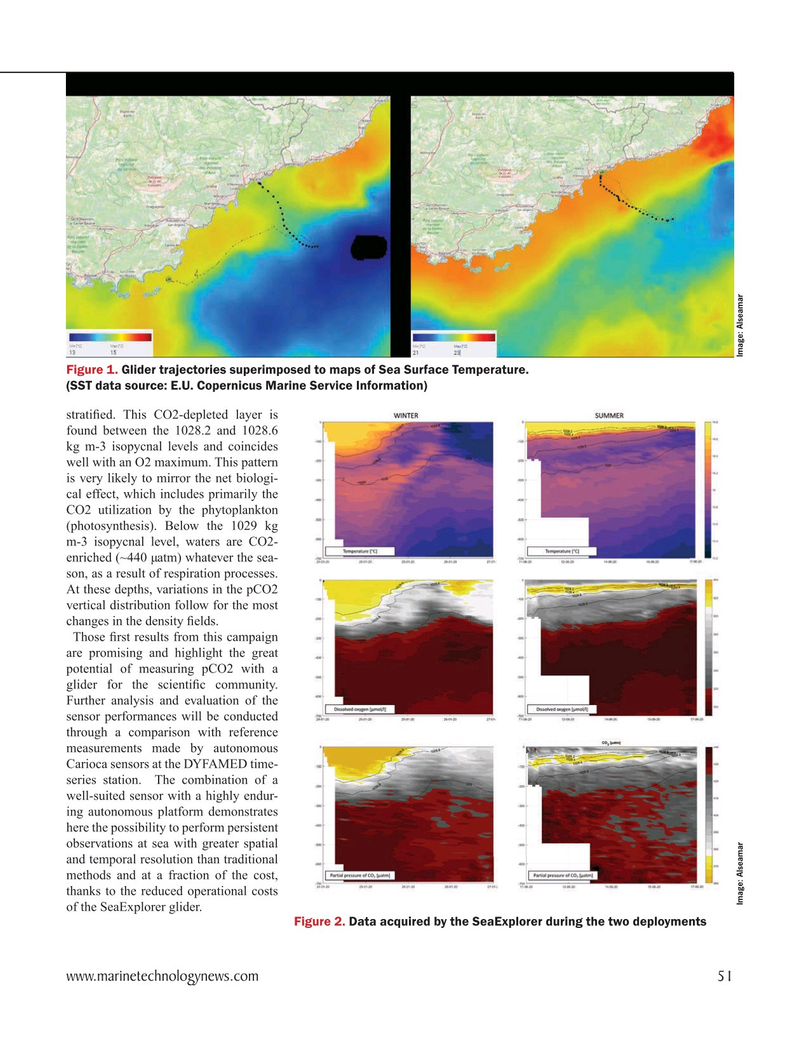
Page 51: of Marine Technology Magazine (September 2020)
Read this page in Pdf, Flash or Html5 edition of September 2020 Marine Technology Magazine
Figure 1. Glider trajectories superimposed to maps of Sea Surface Temperature.
(SST data source: E.U. Copernicus Marine Service Information) strati? ed. This CO2-depleted layer is found between the 1028.2 and 1028.6 kg m-3 isopycnal levels and coincides well with an O2 maximum. This pattern is very likely to mirror the net biologi- cal effect, which includes primarily the
CO2 utilization by the phytoplankton (photosynthesis). Below the 1029 kg m-3 isopycnal level, waters are CO2- enriched (~440 µatm) whatever the sea- son, as a result of respiration processes.
At these depths, variations in the pCO2 vertical distribution follow for the most changes in the density ? elds.
Those ? rst results from this campaign are promising and highlight the great potential of measuring pCO2 with a glider for the scienti? c community.
Further analysis and evaluation of the sensor performances will be conducted through a comparison with reference measurements made by autonomous
Carioca sensors at the DYFAMED time- series station. The combination of a well-suited sensor with a highly endur- ing autonomous platform demonstrates here the possibility to perform persistent observations at sea with greater spatial and temporal resolution than traditional methods and at a fraction of the cost, thanks to the reduced operational costs
Image: Alseamar Image: Alseamar of the SeaExplorer glider.
Figure 2. Data acquired by the SeaExplorer during the two deployments www.marinetechnologynews.com 51
MTR #7 (50-63).indd 51 9/11/2020 1:00:16 PM

 50
50

 52
52
